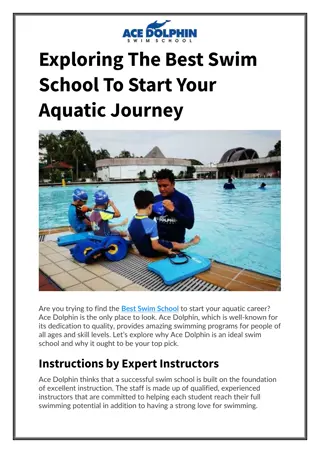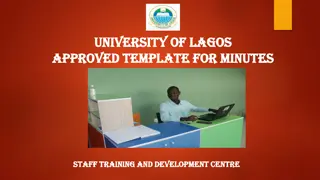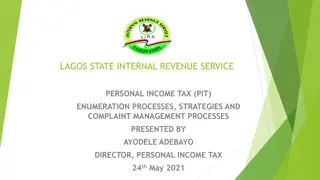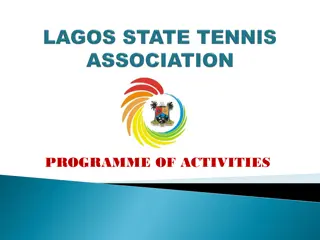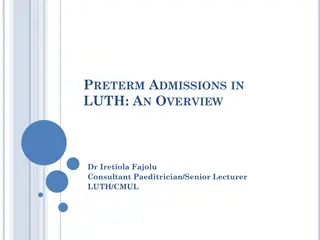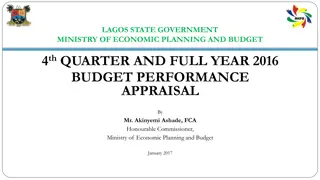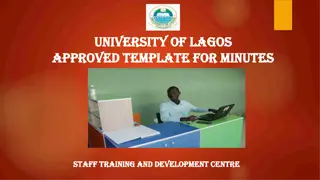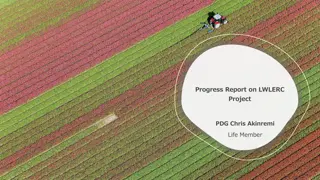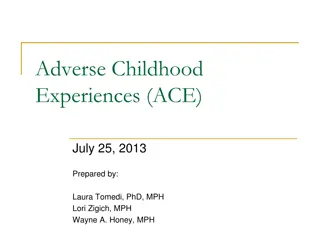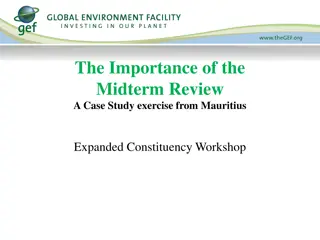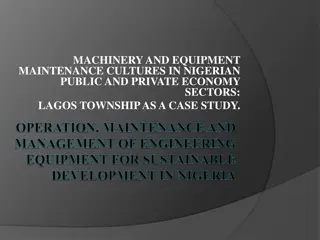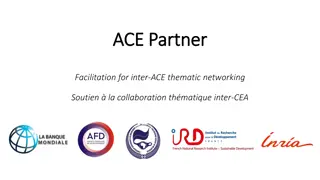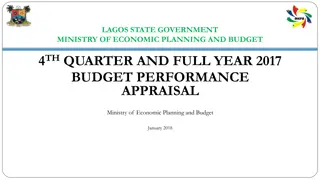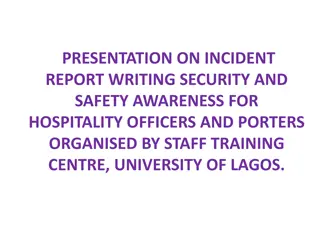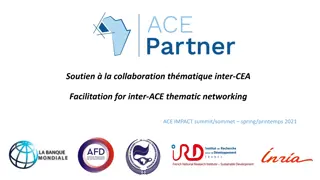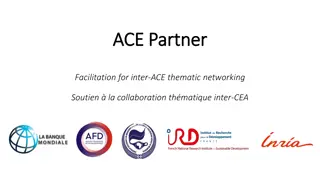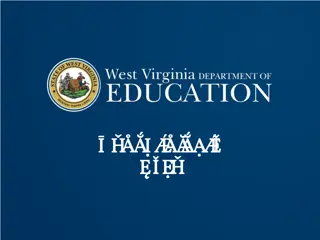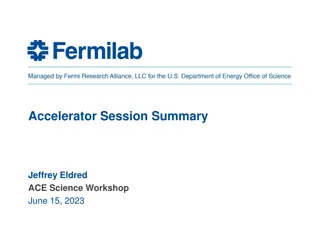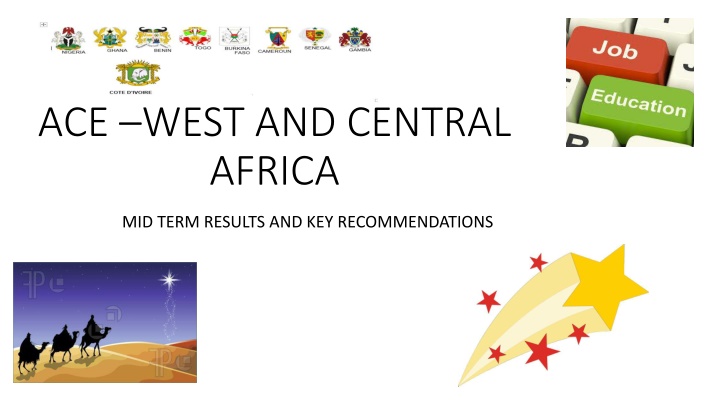
Key Mid-Term Results and Recommendations for ACE West and Central Africa
Discover the key mid-term results and recommendations for the ACE program in West and Central Africa. Highlights include strong academic achievements, factors contributing to success, areas of improvement, and key operational enhancements. Explore the progress made by institutions in the region and the crucial recommendations for future development.
Download Presentation

Please find below an Image/Link to download the presentation.
The content on the website is provided AS IS for your information and personal use only. It may not be sold, licensed, or shared on other websites without obtaining consent from the author. If you encounter any issues during the download, it is possible that the publisher has removed the file from their server.
You are allowed to download the files provided on this website for personal or commercial use, subject to the condition that they are used lawfully. All files are the property of their respective owners.
The content on the website is provided AS IS for your information and personal use only. It may not be sold, licensed, or shared on other websites without obtaining consent from the author.
E N D
Presentation Transcript
ACE WEST AND CENTRAL AFRICA MID TERM RESULTS AND KEY RECOMMENDATIONS
CONTENTS 1. Key results highlighted 2. Key factors contributing to success 3. Key areas of improvements and challenges 4. Key MTR recommendations for discussion 5. Key operations improvements
1. Strong results at mid-term! new centers such as West Africa Center for Infectious Pathogens at the University of Ghana, previously did not exist high quality education and research center 107 MSc and PhD students enrolled, up from 20 students annually won bilateral competitive funding of 5 million pounds international accreditation for its biology program. strengthening of strong existing centers such as 2iE in water engineering and management The results-based financing model gives strong incentives for performance 4 centres have international accreditation-more to come! Growing regional student enrolment- ACE phd s graduated at Uni Port Harcourt in Nigeria in Petroleum studies Revenue generation through competitive grants and private sector donations Pushing for industry internships Good dynamic teams, strong support, hard working Range and diverse ACEs Redeemers University from Nigeria-only testing center in all of Africa for Ebola virus! UGB Gaston Berger-international center for mathematics in Africa
2. Key factors of success 2. Key factors of success Strong pro Strong pro- -active Bank/AAU/Govt team active Bank/AAU/Govt team crucial in solving bottle necks crucial in solving bottle necks competitive selection process competitive selection process central to selecting strong teams, leaders and institutions. However still some difficulty with a number of institutions Pro-active governmental, AAU and World Bank supervision solve problems and greatly facilitate centre progress.
3. Key areas of improvement/strengthening 3. Key areas of improvement/strengthening collaboration University industry/employer linkages University industry/employer linkages effective funds utilization/investment More regional More regional collaboration Formulation of DLIs do not have to be a one size fits all approach Governance and project management structures Challenges in obtaining international accreditation processes. Faculty motivation and incentives
4.Key MTR Recommendations 3. Improve the DLI verification process 1st verification exercise complete. 2nd verification exercise began in February 2017 Verification of first batch of DLI 2.8 initiated Key improvements: importance of good data submitted by the centers better communicate the process of the verification early undertake regular communication and coordination with Technopolis on the student verification process communicate early the process and enhance the supervision of the implementation of the verification of DLI 2.8. 2. Continue strong implementation support centers role of the national project steering committee/national focal points critical. Cote d Ivoire, with recent mission in April 2017 addressing some of the disbursement challenges facing the centers. Nigeria faced shortage of dollars affected the Nigerian centers functioning, however, the NUC worked directly with the ACEs to pay major purchases with suppliers directly. 1.Improve funds utilization around half of the ACEs need to increase funds utilization. accelerate implementation of big purchases of equipment and rehabilitation/civi l works
4. Potential moderate and gradual fund 4. Potential moderate and gradual fund reallocation for less performing centers reallocation for less performing centers A very small number of centers have challenges in implementation for various reasons-for instance consistent governance challenge These small set of centers have received significant support and review by AAU/Bank and government teams Any fund reduction will be led by the national review committee of the country and any relocation will be within country Principles of reduction will be based on : Proportion of achieved results Proportion of fund utilization Consistent failure to take on key recommendation following supervision visits.
Proportion of results achieved (%) Disbursed amount Committed amount (to be provided by the centers) Proposed reduction (if any)- discussion to be led by the national review committees ACE Current Grant Amount Funds utilized (per Dec 2016 IFR) 1 2 2iE 5100000 5100000 57 32 30 28 ACEGID 30 16 3 ACENTFDB 2,600,000 32 13 12 13 4 ACEPRD 5100000 23 8 5 CEADESE 5100000 25 8 4 6 CEA-MITIC 5100000 44 21 15 7 8 9 10 CEFTER CERHI CERSA CETIC 2600000 5100000 5100000 5100000 37 24 22 32 10 11 15 9 20 9 21 4 DRYLAND AGRIC 11 4500000 32 19 13 27 12 KNUST 5100000 12 21 OAU-OAK PARK PAMI WACCBIP WACCI 16 13 4500000 13 10. 14 15 16 5100000 5100000 5100000 30 51 30 22 8 9 34 7 14 25 17 CEA-SAMEF 5100000 21 21 4 22 18 CEA-SMA 5100000 13 19 CEFOR 2900000 44 34 11
5. Key improvements in ACE Operations Manual Improvements to DLI definitions: DLI on enrollment of MSC/PHD and internships Short term students must participate in a program of at least 40 hours in order to be eligible. Faculty in the ACE is ineligible as short term students. DLI on internships Only students in master and PhD programs (and faculty) are eligible for the internship results. Hence, short term students are ineligible. An agreement to evaluate internship DLI for health sector given challenges experiences with the health centers in internship. Proposal is to include applied research institutions as eligible internship for health centers. DLI on revenue generation-adjustment to be more flexible to include competitive funds Externally generated funds from other donors/development partners generated through competitive process is found as eligible for instance research grants or other funds that have been won through competitive process. DLI on quality and accreditation Specific amounts for national accreditation DLI will now be maximum at $200,000 for the center following achievement of national accreditation For gap assessment the project will also allow for a maximum of $200,00 for the center following successful completion of gap assessment following agreed standards with WB Consider adjustment/reallocation of Procurement DLI 4 Given that no centre has achieved DLR 4.2 on timeliness of procurement, it is proposed that this DLI (worth $400,000 be removed/reallocated to another DLR).
5. Key improvements in ACE Operations Manual Improvements in M&E processes Introduced specific M&E Templates for DLI Verification Introduced section IV on verification process. Introduced specific section detailing on milestones for DLI 2.8 for all ACEs Updates on Eligible Expenditure Definitions Updated EEP definitions for Ghana centers
Can ACEs SURVIVE SURVIVE without being INNOVATIVE INNOVATIVE ?

